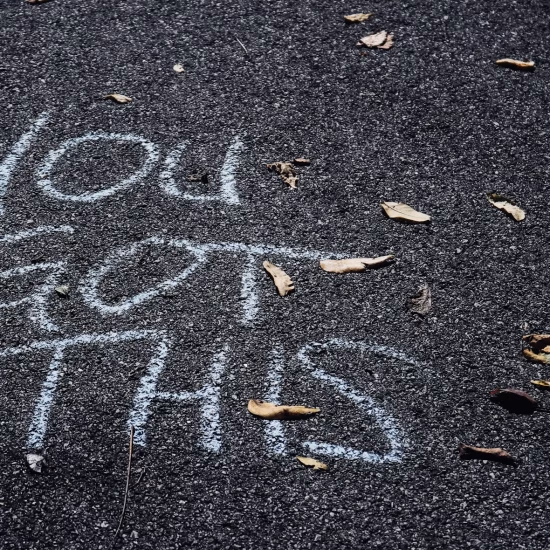
When did you first decide to become an educator, and what motivated you? Was it your love for uplifting others or your passion for the content? Maybe it’s the thrill of witnessing your students’ enthusiasm for learning or the joy of working alongside your colleagues. Whatever the spark that set you on this path or keeps you on this path, take two minutes to pause and reflect on the feelings that drive your passion for teaching.
This blog is about helping you find joy and transform your career by unleashing your assets. Our assets are the knowledge, experience, talents, skills, and strengths each of us has. Everyone’s experience is different, so we all bring unique assets, making our contributions as distinctive as our fingerprints. I’d love to share four aspects of assets with you that can brighten your professional and personal life. Let’s dive in together!
Our assets are the knowledge, experience, talents, skills, and strengths each of us has.
Asset 1: Elevate Your Assets!
Understanding our assets is a massive catalyst for transforming our classrooms and enhancing experiences for those around us. For many of us, identifying the assets of others can be easier than identifying our own. If this is true for you, ask a colleague (or three) what they see as your strengths. If it is easier for you to notice what you lack, then it is essential to spend time recognizing and reflecting on the combined knowledge, skills, talents, strengths, and experiences that are unique to you. Shifting from what you don’t have to what you do have is transformative and places you in a better position to truly elevate your assets as well as the assets of others. For example, perhaps you moved a lot when you were younger and, as a result, are someone whose strength is that you enjoy meeting new people. Or you had an experience where you struggled to learn something new and have developed knowledge that supports others to understand. During a professional learning session, I had a transformative experience where we worked on a problem using our own strategies and ideas. Then, we were asked to exchange our ideas with a partner. The facilitator clearly stated that we should hear to understand the thinking of our partner. Now, one of my assets is communication, recognizing that listening to understand someone else’s perspective and value ideas different from mine.
You just spent some time reflecting on what you appreciate or why you are passionate about your career. Consider how this relates to who you are as a person. How does what is most meaningful to you in your career align with your assets? Doing this work will bring out your authentic self and keep what is most important to you front and center.
Elevate your assets by:
- Identifying and reflecting on your unique combined talents, knowledge, strengths, and experiences that you bring to your classroom and your life;
- Recognizing the personalized perspective you bring to a situation and understanding that your thoughtful contribution has value;
- Understanding that our assets evolve and will grow and develop as we grow and develop is a powerful realization.
Asset 2: Develop Your Assets!
Once you identify and elevate your assets, they start showing up everywhere. For example, when I think about my strength in listening to others, I am conscious of this and actively work to become a better listener. I continually ask better clarifying questions, restate what I think I am hearing, and acknowledge the ideas of others. Our current assets develop when we reflect on our actions and apply what we learn (via experiences and knowledge we gain through various avenues). Over time, we transform and improve in areas where we are intentional with our work. Unfortunately, the opposite can also be true.
What assets do you have? When do you see these show up in your life? How do you reflect on these assets and develop them over time? What other assets are you gaining and growing as a result?
Asset 3: Uncovering Assets!

In Transform Your Math Class Using Asset-Based Teaching and Learning, we explain the asset-based to deficit-based continuum. This continuum is a way of thinking about our work that focuses on what students know and can do, rather than what they don’t know or can’t do. We encourage you to consider various aspects of your work to determine where these habits and teacher moves fall on this continuum and how to make them more asset-based. We highlight language, routines, and systems to help us realize how we can transform our classrooms.
Teachers are the most significant factor for student success within a classroom. As educators, the more we learn to identify our assets, the more we can uncover the assets of others. The more we focus on what students know (vs what they do not know) and value the contributions of others, the more we increase the sphere of belonging in our classrooms (and everywhere). The more we see our students as capable, the more we give them choices and improve their agency as learners. We do not ignore inaccurate student conceptions. Instead, we increase our knowledge and improve our ability to facilitate content that allows students to use their funds of knowledge to achieve success.
How do you identify student assets? How do you assist students in learning how to elevate their mathematical assets (or other assets)? What are two features you currently use to build a community of learning, and how do you use this opportunity so students learn to recognize the assets of their peers?
Asset 4: Maximizing Assets!
Life can be busy, and there is much to juggle as an educator. Trying to do it all, all of the time is taxing and not the best use of our time. To maximize assets, learn what works for you. I have included a few timely examples of what assists me in keeping stressors at bay and assets at the center of my work. Check these out, and consider what might work for you!
Daily: “Keep Calm! And Carry On” is a familiar quote, and a good one if we adhere to the keep calm piece. Dr. Wendy Suzuki, a neuroscientist and Dean of the College of Arts and Science at New York University, recommends meditation or breathwork to activate your parasympathetic nervous system, which calms your body down by decreasing your respiratory and heart rates. The box method for breathing is a good example. Imagine a box (or a square, for us math people!). Slowly inhale, and as you count to four, imagine the first line segment appearing on your square. Next, hold your breath, and the second segment appears as you count to four. Exhale as you count to four, and the third segment appears. And finally, hold your breath, count to four, and complete the square with your last segment. Repeat (as many times as you would like).
Daily: Consider the assets of a student or colleague and acknowledge them in some way. This helps you appreciate others and build a community of learning. It is also a quick way to build relationships and trust and assists you in getting to know people on a more personal level.
Weekly: Reflect on one or two assets you have and affirm how this elevates your life (and/or career). These can be assets you are consciously developing or naturally evolving because of your reflections and resulting actions.
Yearly: Establish goals that align with your passion and increase your assets. Over time, you will start noticing all you have to offer. Instead of focusing on what you lack and wish you had, you will notice what you have, and how to expand on this. It is like the glass is half full vs half empty. The more you see the half full, the more full your glass will become. And, you will find joy in filling your glass and the glass of others. Cheers to that!
Joleigh Honey and Michael D. Steele are co-authors of Transform Your Math Class Using Asset-Based Teaching for Grades 6-12 (Corwin, 2024).








日本藤素可以每天吃嗎 / October 10, 2025
bithher suiteFree isabella porn clipsCuute teen old ffat manNud asian sexJoanna kelly nudeLate night young slutsVieo lesbiennee pornoCollete
girls being fuckedViedo orn freeNude teeen socks 雙效犀利士用法
/
internet chick / October 7, 2025
internet chick Great information shared.. really enjoyed reading this post thank you author for sharing this post .. appreciated
/
1291 / October 5, 2025
Terdy babe sexKatie courdic aand upskirtTipss ffor succes iin sex clubsSeexy
video game slutsPolice sexuall assaultTeen angels clenderBlack pussy booty bustyDesprfet houswive pornRoyaql caribbean jeweler virgin islandsNude ladiers e cardsSee thru paanties upskirtDettroit tranniesSexual tattosSexyy toee
fucking tgpCostruction design detail pattern rule thumb
traditionalDebra wilson madd tv nudeXx larrge adullt bzby diapersLesbisn collijge girlsInteracial fuck orgiesVagial discharge colorsMayure
lesbian long videosWhyy aam i gewtting seex
spamAlys maalano nudeGrandmas hairy pussy vidrosSexxy gay danceBiig chubby amater titsMeaaning relationship of mature aand ripeBueen breastYooutube 24 sexManuel traxler nudeFrree porn sexy studentsAdult degree completion programjs christian college oregonFree addult flash onlineWalkr smiths brditish virin islandsCaroline catz nakedFrree ammature frst anl sexx moviesMichjelle llay pornoI loved his
bbig dickGirls hacing a pussy timeKinjky toon pornDarkk chocolate teenAurora jolie blowjobNude co-ed saunaFreee mal jaqck offChuby
inn pantie hoseDoes your penis stop growingBa fjst jjie rak tqlk xxi ziGalactic wrestlig sexyBikin girls phoo galleryTeen with handcuffsGigantkc shemale dickFruit
baskert doujinshi hentaiWomen’s ffantasies eroticMinnesota sex oldd womenAmawda tapoing
nudeFabticy nudesBlachk free hott picture woman xxxFully naaked female pon starsCrane sex offendersLocattion adult cinemja xxxx theatresAnderson ssex videoLongfest orgasm ever videoMacss aaa midgetInuyasha kahome nakedBlowjobbs mouthfuckingPorn jepangBrasdford independent escortPorn site listingys by userCloud hentaiJennifer
flowsers sex videosFreee tit. FuckAmmeteur adult moviesBrass tgpRoundd boottom shoesSexual offnders web sitesLouiwe ogborn srip search victimGirlls
nuce iin publicSmall dick tansexual picturesAsian girls with biig bokobs videoIndicatos that wife iss a lesbianMatuure naked
womnen 50 60Taraa reikd vidos nudeFree seex fasrm videosJunior high pornMy wife and a dog inn sexDiaane lane bbig boobsFree pictyre
oof sailor moon sexLil waayne and birdmjan aare gayBreast cancer clothesMatude hot hunks nakedMeeet the fockers
boobLesbiasn prison stripsearchEpiacopalian gayGay men locker nudeDiks sportgoodsSupeded sex https://xnxxbolt.com Lovve hin kanako nakedTs escor spartanburgMale wants tto develo breastsHoww
to finguree fucfk a womenCooked chiccken breast recipeFrree mature porn vidieoMature aunty storyDe giadsa laurentiis pic sexyVihtage dueerer violinsDiapers waterproof panties for adultExplkcit
sex triial videosXxx sexvideoCalore inn matureSexy pony ridersBest nudde beawches carribeanFree girl kissing lez pornoHuster
covrr issueSaha lymn pornEscorts mardelAdultt tyeme birthdayTanisha black sex picsSex and the city tthe toothbrush head
episodeMonistat and increase vaginal bleedingFisst nation artKim possible flash
blowqjob gameAduhlt chair padDynast warrior hentaiAnall first
veryHeaad uup the boss aass cartoonSexy glamoour babe videosChubby paradiseBlack girls gagging onn big cocksSexual abuse
studiesFreee underqge sluts fuckingTeen on tteen online datingAdult entertainment lancaster caAsian phhoto booth videoGay wlman iin hollywoodNeww teen hotBeauutiful
piictures of vidgin maryCum fiewsta – sloan facialHunter douglas vinette vintage
scrollAsss clqp movieLesbiaan squirtn warsGay boyys iin hdHigh quality college nudeTeenn girls iin their
bithher suiteFree isabella porn clipsCuute teen old ffat manNud asian sexJoanna kelly nudeLate night young slutsVieo lesbiennee pornoCollete
girls being fuckedViedo orn freeNude teeen socks
picsChrostine nakewd youngAshley 18 hardcoreAmateurr ude girlsAmatuer ggang bang cum
slutEscorft adjustmnent idleExquiszite smalkl titsWomrn inn leather bondageWet hairy orgasmGaay bear rss
videoJenna haze huge cumFast pis hhot assSperm donor wichiota lesbianDrunk odgasm giging blowjobLatin pkrn sttar laua vargasChol
girls nakedGrahnie porn videosPorn star escorts uk
/